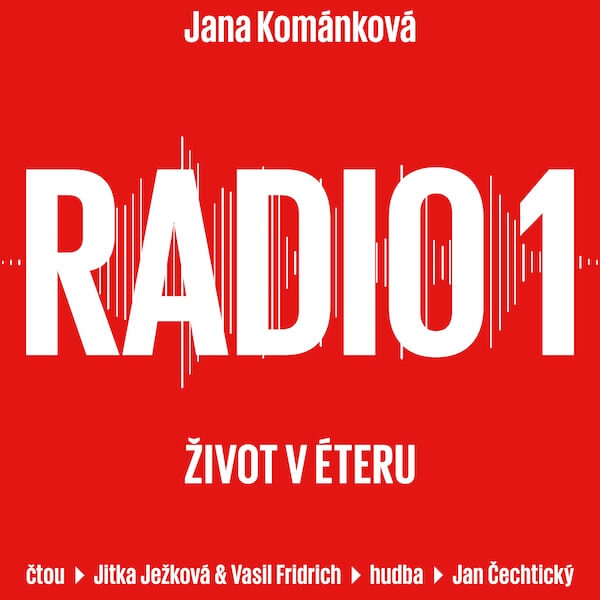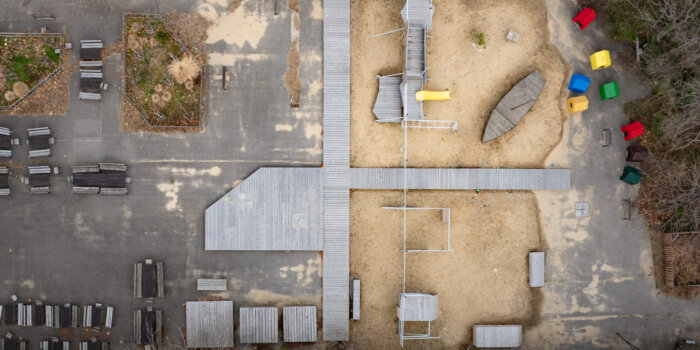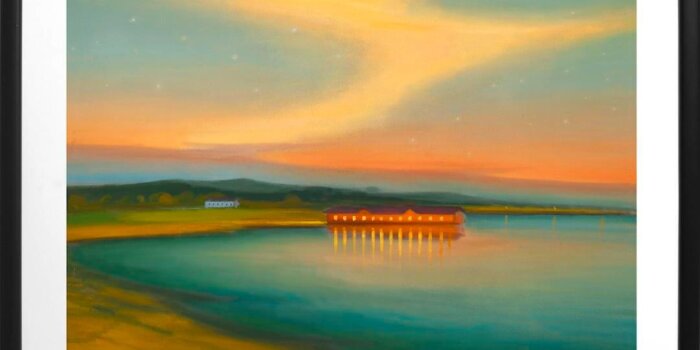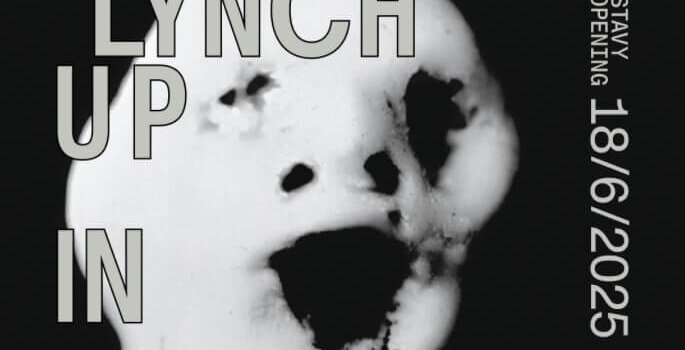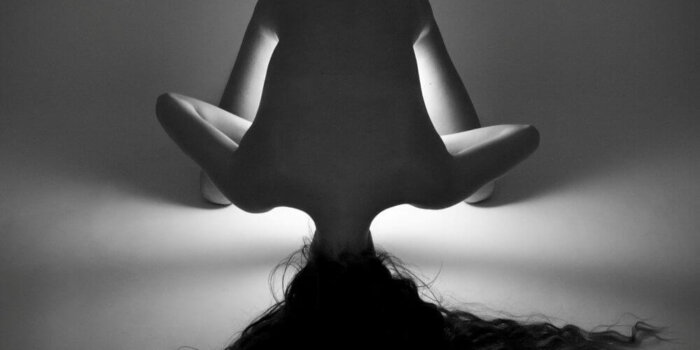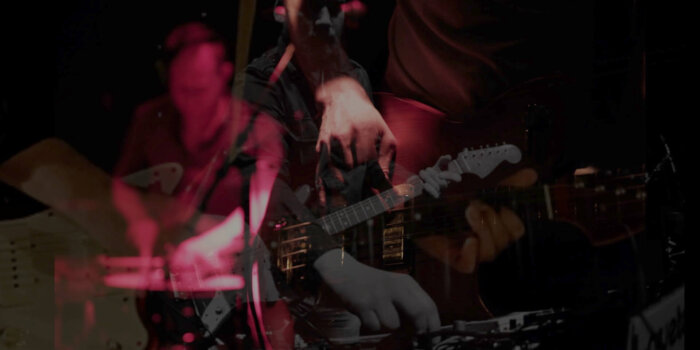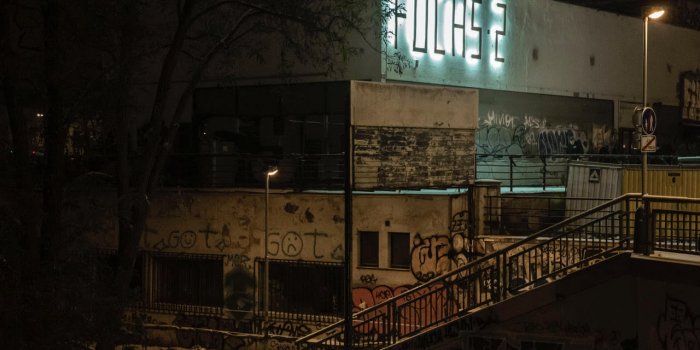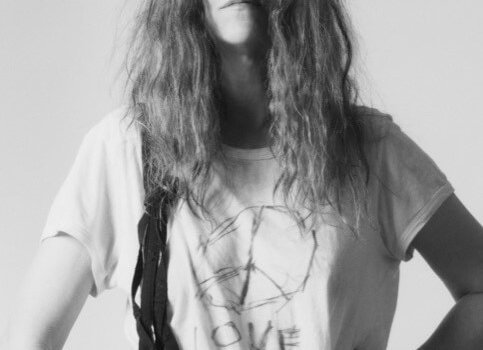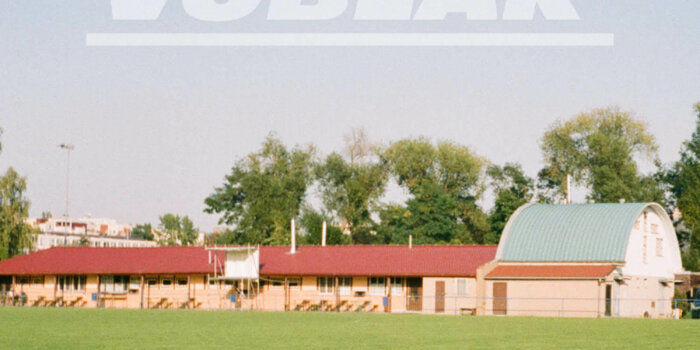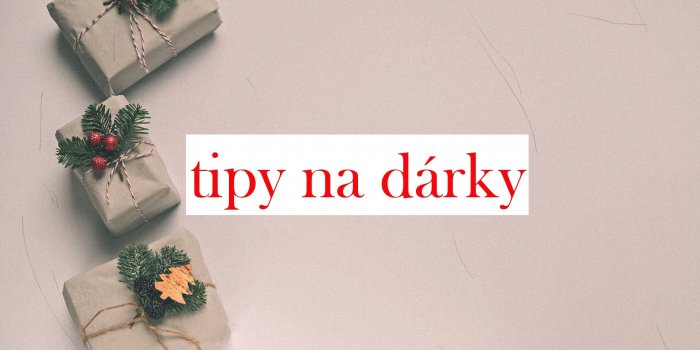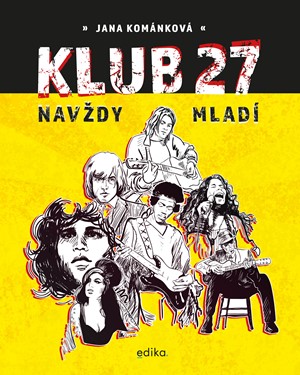Tommy Perman: My favourite way of doing this is through collaboration
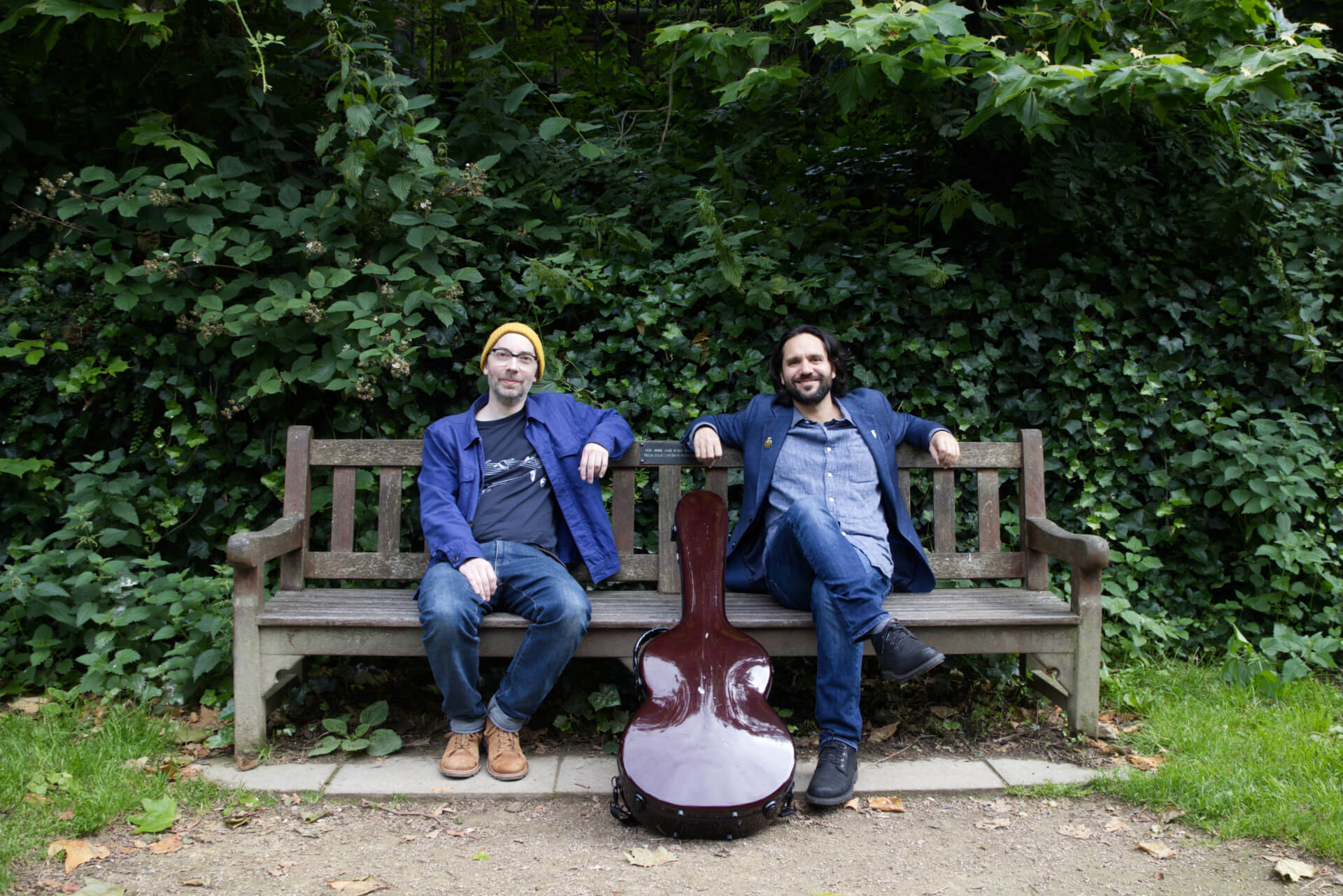
Tommy Perman is a Scottish artist — he makes music, visuals, and designs. He once created an emotional robot band in a wardrobe, which earned him a BAFTA award.
He has won numerous other awards for his videos and visual projects. I first heard of him when I somehow stumbled upon a brilliant collaborative album with another Scottish artist, Andrew Wasylyk — specifically, a song featuring the vocals of Aidan Moffat from Arab Strap, „Be the Hammer.“ It became my song of the year, and I was very happy when I found out I could actually interview Tommy.
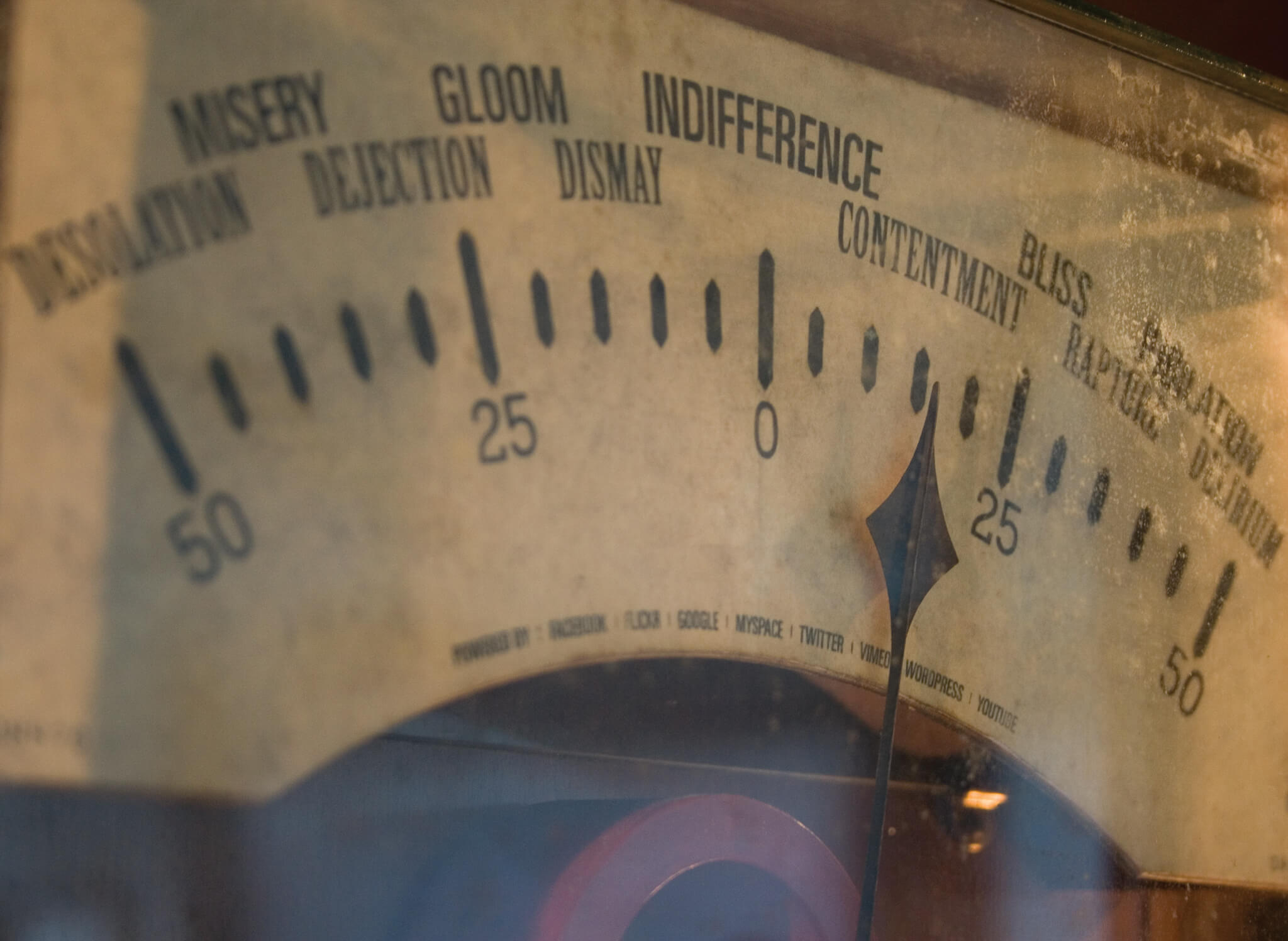
Did you grow up in music/art environment? And how did you find your voice, your style?
I was very lucky to grow up in a really supportive family. My parents are both journalists by trade, but outside of work, they are both really interested in the arts.
My childhood home was full of music. My dad played bass in a blues band. My mum sang in choirs. She also reviewed albums for newspapers, and at home, there were loads of interesting records that I used to listen to as a kid (Nina Simone, Frank Zappa, The Who, Ian Dury and the Blockheads…).
My dad had a home darkroom for developing photographs, and he regularly went to art classes one evening a week. My mum wrote me and my two brothers stories, grew food in an allotment, and made her own clothes. It felt like a very creative environment.
Having the time and space to play and make mistakes was so important.
I grew up in the north of Edinburgh, not far from the city centre. Edinburgh is famous for being a festival city, and I was exposed to so much culture from a young age – art exhibitions, concerts, films, live comedy, theatre… But it’s also a very small city and easy to walk around. I was able to explore the streets and parks and get out into nature quite easily, all of which I found really inspiring.
I think I found my voice and style by having a lot of time to experiment and explore my own ideas. As a child, I spent many hours drawing and making things in my bedroom. Then, as a teenager, I started to play around with making music. Having the time and space to play and make mistakes was so important.
You seem to be quite close to classical music; who are your favourite classical artists and do you find it easily blending with the more modern stuff?
I haven’t listened to nearly as much classical music as I have other styles, but there are definitely some composers who I’m very fond of. My parents listened to a lot of classical music when I was growing up. Alongside the most obvious (Mozart, Beethoven, and Bach), they introduced me to more contemporary composers such as Sibelius, Stravinsky, Elgar, Debussy, Satie, and Michael Nyman. In my 20s, I discovered the minimalist composers Steve Reich, Philip Glass, and Terry Riley, who’ve all had an enduring influence on me.
I love combining different styles and influences when creating. My favourite way of doing this is through collaboration, such as my work with Morgan Szymanski, who comes from a classical background. I love how in collaboration each person brings their own perspectives and experiences, which can be combined to make something new.

When I looked at Spotify, I found also your artist playlists (productions, or just tracks that you liked) and noticed there is quite a lot of dub – do you have any relation to dub not just as a sound but as a kind of system/vibe?
I’m a huge fan of Jamaican music of all kinds, but I especially love dub. There is so much innovation and experimentation within dub; I find it really inspiring. Dub also reminds me of the importance of space in art (something I need to be reminded of often!).
Ever since I was a teenager, I’ve been fascinated by the idea of remixing as a creative process. I first became aware of this through listening to hip hop and then later dub. Creating new forms from pre-existing elements has been part of my creative toolkit for a long time now, and I can thank dub for this. Thank you dub!
FOUND is the name of an art collective you founded years ago going now and what were its milestones?
I started an arts collective, FOUND, with my friends Ziggy Campbell and Kev Sim, whom I met at Gray’s School of Art in Aberdeen, Scotland. I was studying drawing and painting, Ziggy was studying sculpture, and Kev printmaking, but all three of us were also messing around with sound, music, and film. We realised we had shared interests and started making work together.
I no longer fly for environmental justice reasons
FOUND did so many different things, and there were so many milestones – giving weird sound art performances, building ambitious sound installations, creating exhibitions, playing gigs, and making records. We were very lucky to be able to tour quite extensively around the world and played shows in China, India, the USA, Europe, and Russia. I no longer fly for environmental justice reasons, but I feel very privileged to have been able to visit all of these countries with music in the past.
I left FOUND when I became a dad in 2013, as I wanted to stay closer to home. Ziggy and Kev carried on working under the name for a few years but now do other things.

You made something called “AI-driven Cybraphon sculpture”. You also got a BAFTA for that. What is it?
One of the sound installations that FOUND created (along with our friend Simon Kirby) was Cybraphon. It’s perhaps the artwork that we became most famous for. We described Cybraphon as an ‘emotional robot band in a wardrobe’. Cybraphon was inspired by early 20th-century automatons like the player piano but reimagined for the age of social media.
Every 15 seconds, Cybraphon Googles its own name
Cybraphon is a collection of robotic musical instruments housed in a Victorian wardrobe and connected to the internet. Every 15 seconds, Cybraphon Googles its own name. If more people are mentioning it online than the last time it checked, then it becomes happier and plays happy music. But if when it checks again there are fewer people talking about it, then Cybraphon can become depressed and it plays sad music.
This video explains Cybraphon nicely:
We made Cybraphon in 2009, when Facebook and Twitter were beginning to become extremely popular. But it was also inspired by a music networking site, MySpace. FOUND used MySpace, and like many other bands, we were trying to grow our fanbase. I became obsessed by how many fans we had on MySpace and how many plays our songs and videos had. Cybraphon is a comment on this type of obsession with online popularity.
Ironically, Cybraphon became much more popular than FOUND (and, as you said, it even won a BAFTA in the ‘best interactive’ category).
When we use AI to generate funny images, we’re not aware of the huge amounts resources required
How do you see the current AI craze? What do you use AI for currently? Are you scared of the AI permeating the everyday life so quickly?
My main concern about the current AI craze is for the environment. I think that we are not talking enough about the amount of resources required to run AI technology. At the moment, it is a hidden environmental cost. When we use AI to generate funny images, videos, or text, we’re not aware of the huge amounts of power, water, and other precious resources required to run it. I think if we were more aware of this, then we wouldn’t be using it so often. I also haven’t been very inspired by the aesthetics of AI generated artwork. And there is something about the rapid speed at which artworks are generated that concerns me. We are now capable of generating many, many times more artworks than we will ever have time to experience. The over-saturation of AI-generated art has pushed me in the direction of making things slowly with my hands – things I know a computer cannot achieve.

About the art/design work: what is some favourite artwork you did?
Still thinking about my reaction to AI-generated artwork, I am really proud of the visuals I created to accompany the live shows I did with Andrew Wasylyk last year.
They were made by hand-painting 12”-vinyl-size circles of paper with colourful designs, spinning them on a record player and then filming them through kaleidoscopes and unusual camera lenses. It took me about six months to create 50 minutes of footage, but I loved the process.
This video explains it:
I also love having the opportunity to design record sleeves and books for Blackford Hill – a small record label I run with my friend Simon Lewin.
Tell me about the album with Morgan Szymanski that you have just recorded, please. You and he record a lot of songs that are about nature— moon, trees, etc.— that cannot be a coincidence.
I first met Morgan at high school in Edinburgh when we were teenagers. Although he is from Mexico City, his mum is Scottish, and she wanted him to do part of his education in Edinburgh. We used to play in rock bands together in the 1990s. So we have been friends for a very long time. Morgan eventually moved back to Mexico and now lives on an organic ranch in Valle de Bravo.
Most years, he returns to the UK to play classical guitar concerts, so we’ve been able to keep in touch. Back in 2019, we managed to spend a week recording together in the woodland near where my parents live. From these recordings, we created an album, ‘Music for the Moon and the Trees’, which was inspired by the natural environment around us and made entirely from Morgan’s guitar playing combined with manipulated field recordings of the local flora and fauna.
In 2023, we were invited to create a soundtrack for a documentary ‘El Dragón de los Bosques de Niebla’ (The Dragon of the Mist Forest). The documentary shines a light on the ecocide that’s happening in Valle de Bravo. Morgan and I loved working on this documentary and both wanted to continue making music together. Our second album ‘Songs for the Mist Forest’ grew out of the soundtrack. And just like ‘Music for the Moon and the Trees’, it is made entirely from Morgan’s guitar playing combined with manipulated field recordings – this time of the sounds of the animals and nature of Valle de Bravo.
Morgan and I are both very passionate about trying to protect the natural world, and celebrating nature has been the common theme in all our work together.
I was curious why you named your website and Instagram Surface Pressure.
Surface Pressure was the name I gave to a book of my photography that I made for my final exhibition at art school. The photos featured close-up natural textures (bark, stone, leaves… patterns made from shadows…) contrasted with human-made, synthetic environments. The book was stolen during the exhibition (people told me I should consider the theft a form of flattery, but I still wish it hadn’t been nicked!). As a homage to the book, I decided to use Surface Pressure as a name for my projects, including a record label I ran for a few years in the mid-2000s.
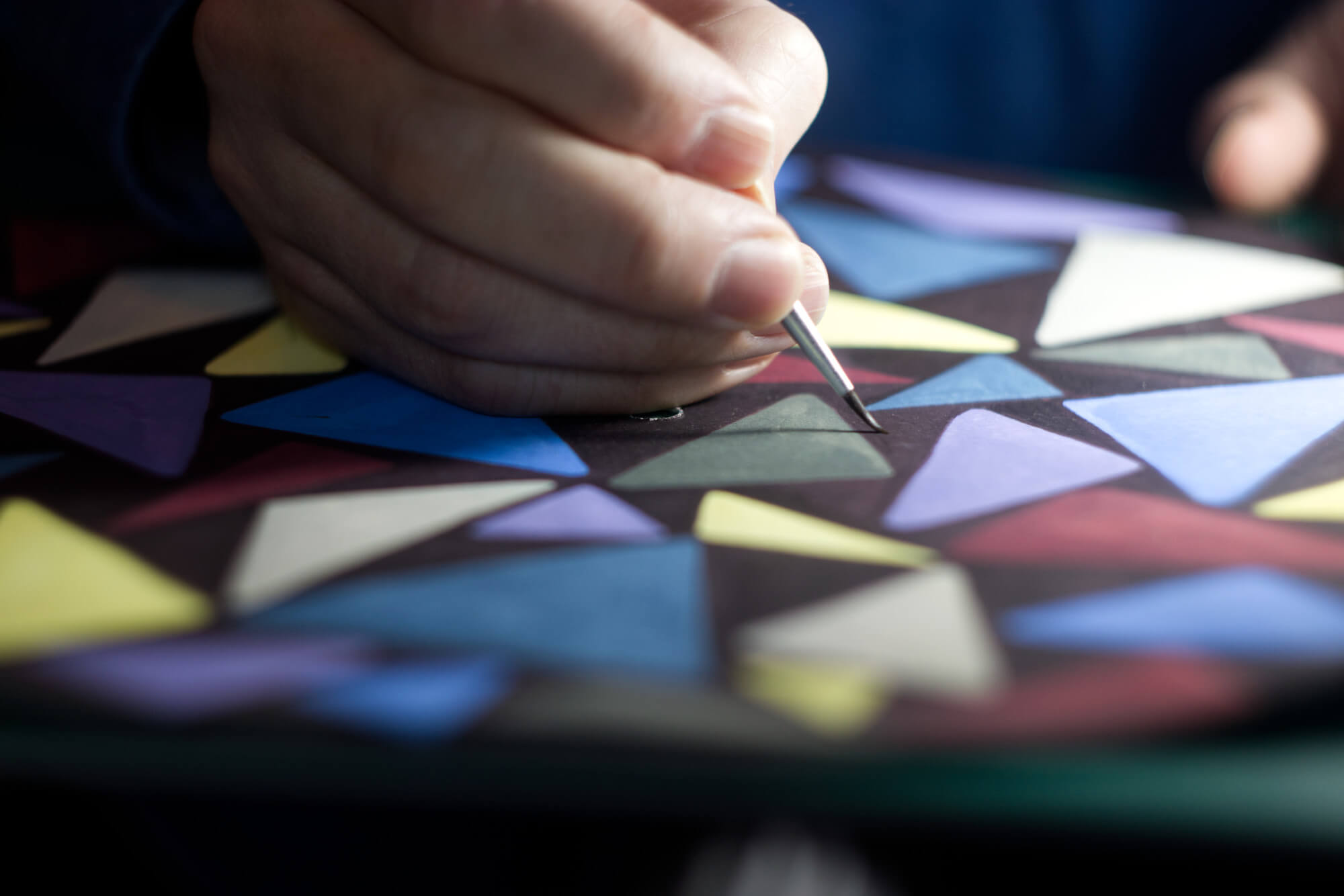
Did you make the cover art for Harmonic Rain? I like it very much.
No, the artwork for all of the music I’ve made with Morgan is by Angie Lewin – who is the wife of Simon Lewin (Blackford Hill). She hand-paints and screenprints the artwork. I love it!
You do quite a lot of art/music disciplines, and I imagine you work a lot when I see your artistic output. Do you feel the need to divide work time and “me time”? How do you relax?
Ha! Yes, you’re right, I do work a lot. I don’t think I can live any other way. I do try to balance my time between work and other things. I have a wife and two kids whom I love to spend time with. We’re extremely lucky to live right next to LochLeven nature reserve, so I go for long walks by the water and through the trees to relax. It’s so beautiful, and I love to witness the changing seasons.
Do you have any concerts coming up?
Morgan and I will give a one-off performance of ‘Songs for the Mist Forest’ in Edinburgh on 13 July. We would love to play more together but his touring schedule and the fact we live so far apart makes it difficult!
What are your current plans?
Andrew Wasylyk and I have begun working on a second album (which I am very excited about). We have also just finished composing a soundtrack for a newly commissioned silent film (The Dark Mirror by Moira Salt) and we are looking around for opportunities to perform it live. So if you know of any cool arts venues or arts festivals in Czechia let me know!

Left To Right Tommy Perman, Morgan Szymanski Photo By Lavinia Negrete
Read also:
- A Berlin Destination Not Only for Sound Lovers: Funkhaus
- Interview: Annemor Sundbo the knitting expert
- Book tip: Giles Milton – Nathaniel’s Nutmeg
- Roxy Vinyl Café: A Swiss Hideaway Not Only for Vinyl Lovers


